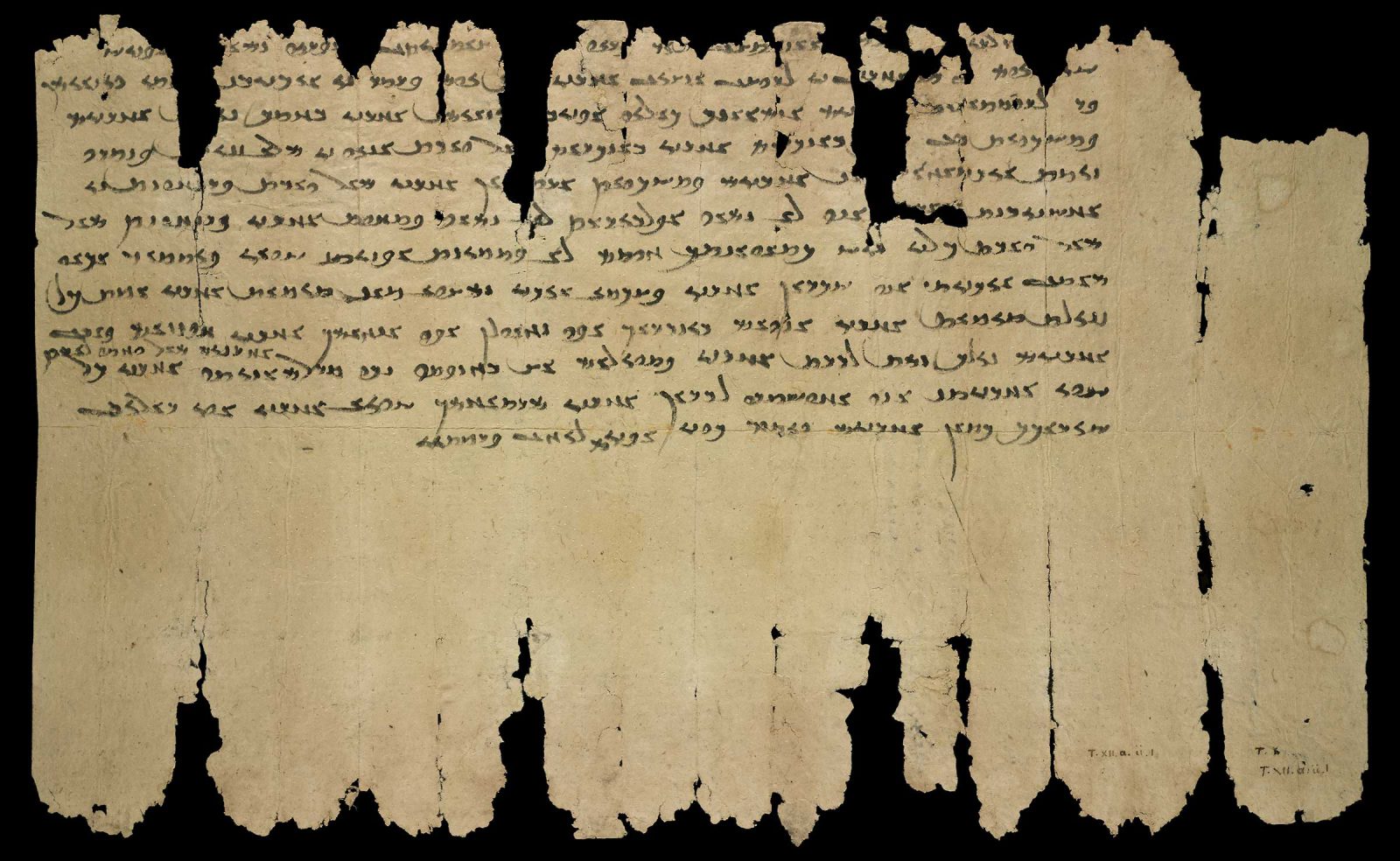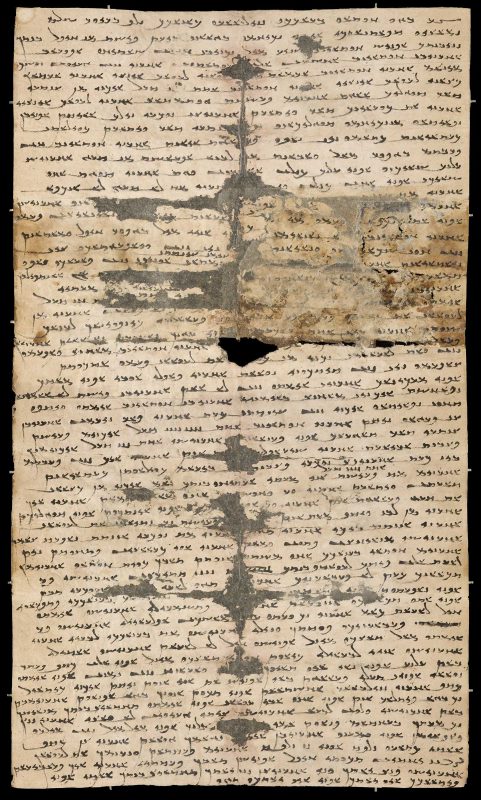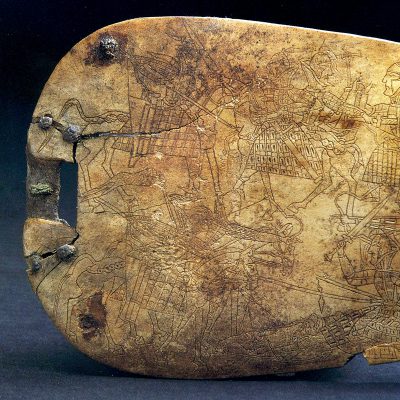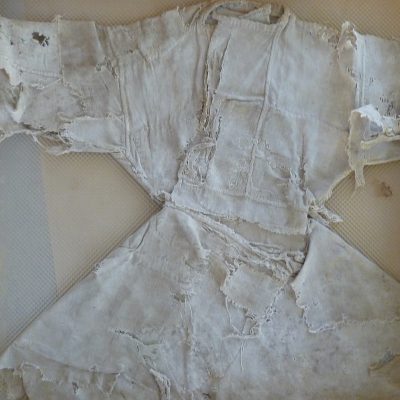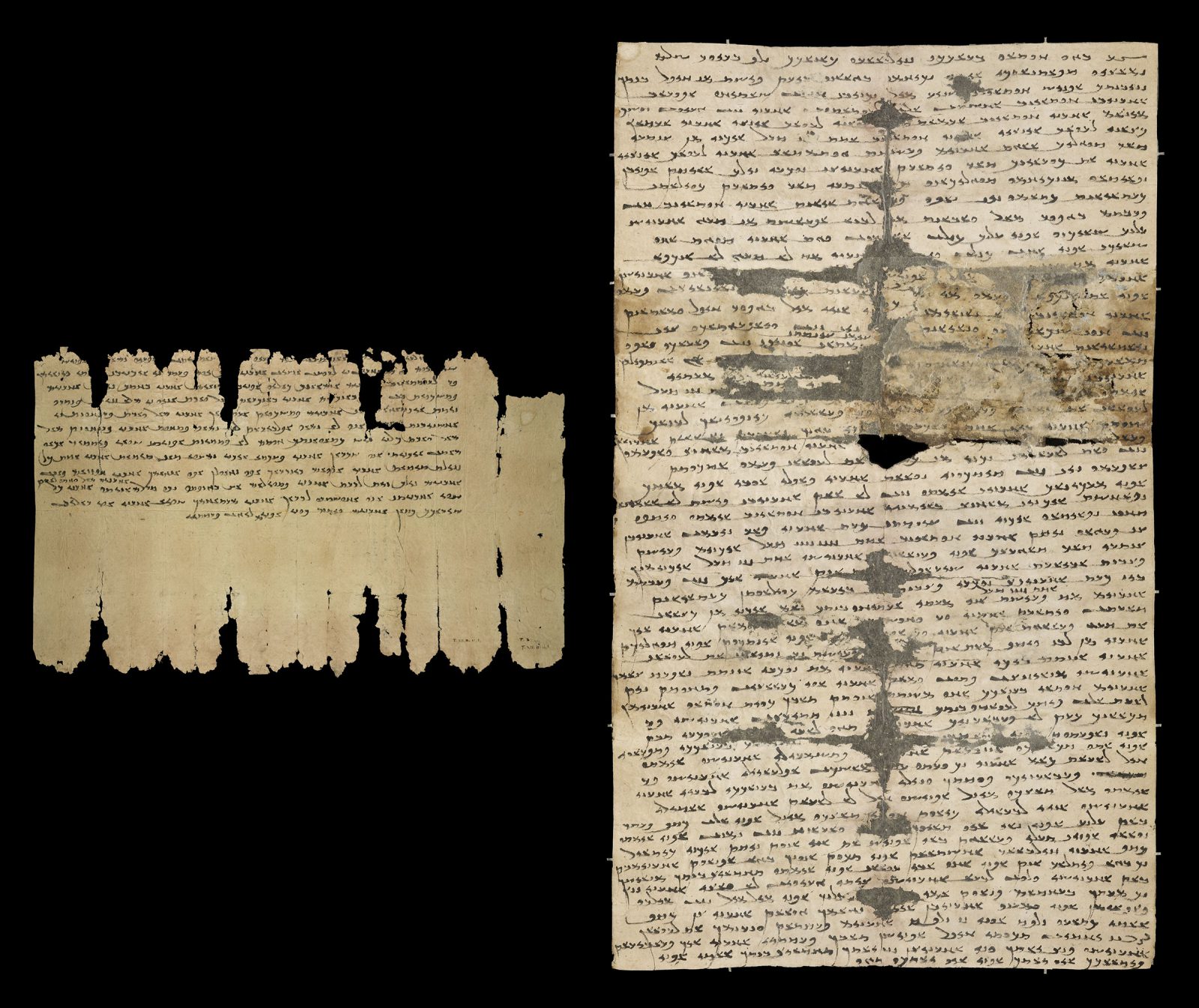
Ancient Letters
Sogdian Ancient Letters 1 and 2, rectos
Ancient Sogdiana, 312 or 313 CE
Ink on paper; H. 42 × W. 24.3 cm
Discovered in 1907 at Watchtower T.XII , west of Dunhuang 敦煌 , Gansu Province, China
The British Library, Or. 8212/92 and Or. 8212/95
Photograph © The British Library Board
The Sogdian “Ancient Letters” are so called because they are the earliest substantial texts written in Sogdian, the language formerly spoken in the area aroundSogdian Language and Its Scripts Learn more about the Sogdian language Samarkand in present-day Uzbekistan and Tajikistan. The Ancient Letters were discovered by Sir Aurel SteinMarc Aurel Stein Learn more about explorer and archaeologist Sir M. Aurel Stein in 1907 at a watch-tower to the west of Dunhuang 敦煌, part of the “Jade Gate” complex that once guarded the western frontier of China. The letters appear to be the contents of a mailbag lost or confiscated in transit. Written on paper in the early 4th century CE by Sogdian merchants and their family members in western China, they were addressed to compatriots in the Sogdian homeland or in the oasis of Loulan 楼兰/樓蘭 (in present-day Xinjiang) . These documents provide a unique glimpse into the lives and preoccupations of the foreign merchants in China. They mention Sogdians living in the Chinese capital at the time, Luoyang 洛阳/洛陽 , in Henan province; and in some of the major staging-posts on the route to China, such as Dunhuang and Jiuquan 酒泉 (ancient Suzhou) , in Gansu Province; Wuwei 武威 (formerly called Liangzhou 涼州) , in Gansu Province; and Jincheng 晉城/晋城 , in Gansu Province 山西省. As one might expect, they are largely concerned with commercial matters, naming many of the commodities traded, including gold, silver, camphor, pepper, musk, wheat, silk, and other kinds of cloth.
Remarkably, two of the letters are written by women.
Sogdian Ancient Letter No. 1
In this letter, a woman named Miwnay writes to her mother, Chatis, describing how she has been abandoned in Dunhuang by her husband, Nanai-dhat. She explains that she has tried to find someone to take her to her mother’s house, but one person after another makes excuses not to do so, so she and her daughter, Shayn, have to rely on charity from the priest of the local Zoroastrian temple.
The same events are recounted in more detail in Letter 3, in which Miwnay complains to her husband that he has left her destitute and does not even answer her letters. The missive opens with the usual polite greetings, but as she describes her misfortunes, Miwnay becomes more and more angry: “I obeyed your command and came to Dunhuang and did not observe my mother’s bidding or that of my brothers. Surely the gods were angry with me on the day when I did your bidding! I would rather be a dog’s or a pig’s wife than yours!” Her daughter adds a postscript explaining that she and her mother have been forced to become servants to the Chinese, but she seems not to blame her father so much as a certain Farnkhund. He may have been one of her father’s business associates, who has apparently absconded, leaving Shayn and her mother to settle his debts.
Sogdian Ancient Letter No. 2
The second of the Sogdian Ancient Letters is by far the longest and most informative. It was written by Nanai-vandak, a Sogdian merchant based in western China, perhaps in Jincheng, and addressed to two of his partners in Samarkand, the capital of Sogdiana, more than 2,000 miles to the west. It was protected by an inner wrapper of brown silk as well as an outer envelope of coarse fabric that bears instructions for the delivery of the letter. After the conventional words of greeting, the letter begins with news of the writer’s agents or associates in various Chinese cities, with a report on the desperate political situation in China. The events described include a severe famine, leading to the flight of the emperor from his capital, Luoyang , and the sack of the cities of Yecheng 鄴城 , in Hebei province, and Luoyang by the Xiongnu 匈奴, or Huns. By comparing Nanai-vandak’s account with those found in the Chinese chronicles, these dramatic events are identifiable as having taken place in the years 307–311 CE. After reporting these disasters, the writer turns to his main interest—their effects on the market and on the situation of his countrymen.
From most of his agents in China he has not received any news for several years. One of them, however, whom he had sent to Luoyang four years ago, had reported that “the Indians and the Sogdians there had all died of starvation.” The last part of the letter contains what is effectively the last will and testament of Nanai-vandak, who considers himself to be “on the point of death.” He therefore instructs his partners how they should deal with a substantial sum of money that he had left on deposit at home, as well as with the property of his father, Takut. The main beneficiary is a child named Takhsich-vandak, probably Nanai-vandak’s son or grandson, on whose behalf the greater part of the property is to be invested, and for whom a wife is to be found when he comes of age. Some of the property is also assigned to the addressees and others of the writer’s associates, presumably to cover at least in part their expenses in looking after Takhsich-vandak during his minority.
Unlike the other letters, which are dated by days and months (but unfortunately not years) according to the Chinese calendar, Letter No. 2 is dated to the Sogdian month Taghmich (June/July) in the thirteenth regnal year of an otherwise unknown lord, perhaps a ruler of Samarkand. Bearing in mind the time that it would have taken for news of the sack of Luoyang in July 311 to have reached Nanai-vandak, the letter was probably written in 312 or 313 CE.
by Nicholas Sims-Williams

Fig. 3 Nicholas Sims-Williams (School of Oriental and African Studies) discusses the “Sogdian Ancient Letters.”
For translations of the Ancient Letters as of 2004, see “The Sogdian Ancient Letters 1, 2, 3, and 5, translated by Nicholas Sims-Williams, with an Introduction by Daniel C. Waugh,” at https://depts.washington.edu/silkroad/texts/sogdlet.html. For the most recent translation of Letter 1, see Nicholas Sims-Williams, “Towards a New Edition of the Sogdian Ancient Letters: Ancient Letter 1,” in Étienne de la Vaissière and Éric Trombert, eds., Les Sogdiens en Chine (Paris: École française d’Extrême-Orient, 2005), 181–93. For both of Miwnay’s letters, see Nicholas Sims-Williams, “A Fourth-Century Abandoned Wife,” in The Silk Road: Trial, Travel, War and Faith, ed. Susan Whitfield with Ursula Sims-Williams (London: Serindia Publications, Inc. 2004), nos. 191 (Sogdian Letter, no. 3) and 192 (Sogdian Letter, no. 1), 248–49.
See also Étienne de la Vaissière, Sogdian Traders: A History, trans. James Ward (Leiden and Boston: Brill, 2005); Frantz Grenet and Nicholas Sims-Williams, “The Historical Context of the Sogdian Ancient Letters,” in Transition Periods in Iranian History: Actes du Symposium de Fribourg-en-Brisgau (22–24 Mai 1985) (Paris: Association pour l’avancement des études iraniennes, 1987), 101–22; Nicholas Sims-Williams, “Ancient Letters,” in Encyclopaedia Iranica 2, no. 1 (1985), 7–9, http://www.iranicaonline.org/articles/ancient-letters; and Nicholas Sims-Williams, “The Sogdian Merchants in China and India,” in Cina e Iran da Alessandro Magno alla dinastia Tang, ed. Alfredo Cadonna and Lionello Lanciotti (Florence: Leo S. Olschki Editore, 1996), 45–67.
Nicholas Sims-Williams, “The Sogdian Ancient Letter II,” in Philologica et Linguistica: Historia, Pluralitas, Universitas; Festschrift für Helmut Humbach zum 80. Geburtstag am 4. Dezember 2001, ed. Maria Gabriela Schmidt and Walter Bisang (Trier: Wissenschaftlicher Verlag Trier 2001), 267–80.
